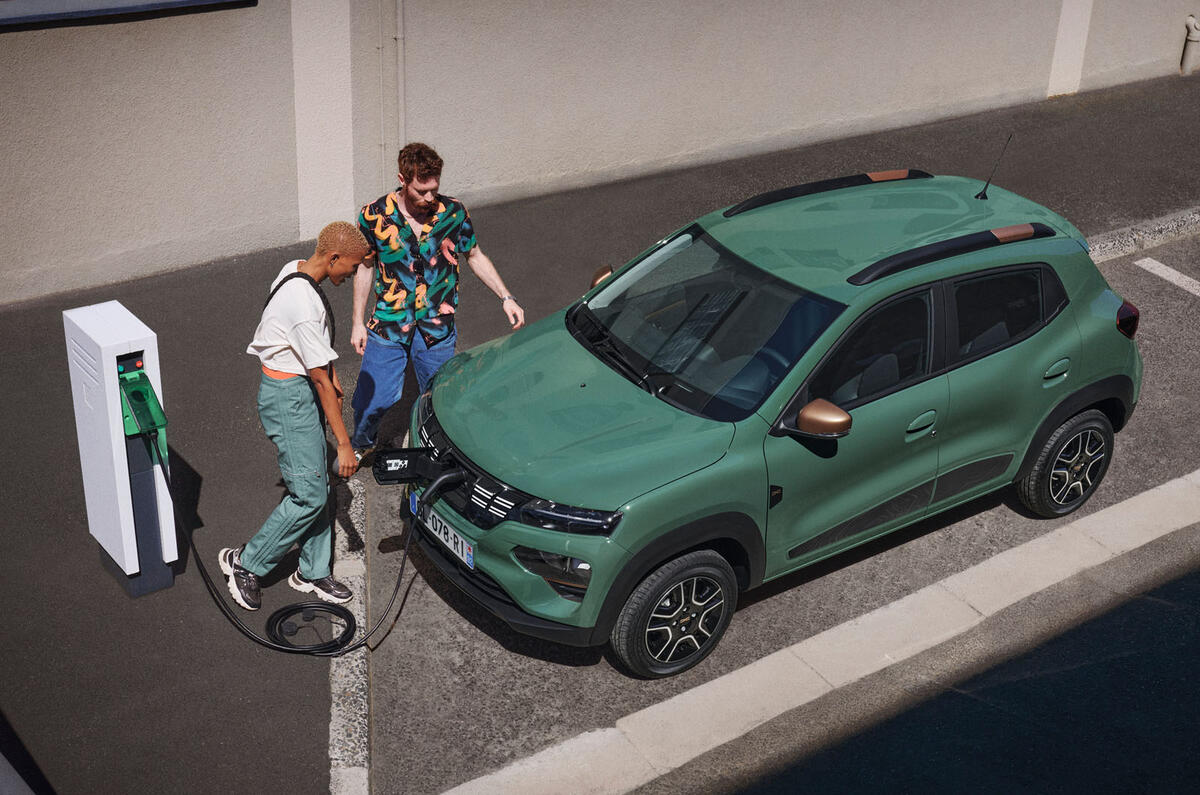Persuading people to switch to electric cars requires addressing several barriers – both real and imagined. Price remains a major factor: for many people, electric cars are just too expensive. That will change as the technology improves, with firms such as Hyundai, Kia, Renault and Volkswagen all pledging small, affordable EVs in the years to come.
But those cars aren’t here yet and the various target prices that executives have offered are just that: targets. So the news that the Dacia Spring Electric – billed as Europe’s cheapest EV – is finally coming to the UK is hugely welcome. It’s a tangible demonstration that battery-electric machines really are getting cheaper.
The key question will be how cheap. Based on pricing elsewhere, we’d expect the Spring Electric to be priced at somewhere just over £15,000. That’s a far cry from the heady days of the £5995 Sandero, but then again even Dacia’s cheapest petrol model now costs more than £12,000. Still, it does highlight the challenge for the Spring Electric: even if it is the cheapest EV on sale, it will still be undercut by some petrol-powered machines – which, contrary to some scaremongering recent headlines, will remain legal to drive in the UK once the sale of new ICE cars are eventually banned.
Clearly, buying a Spring Electric will require some compromise: it has a motor that produces just 44bhp, and a 28.6kWh battery that gives a comparatively meagre official range of 143 miles. So while it might help vault the price barrier, some buyers might be put off by concerns about range – whether real or imagined.
The reality is those limited-range compromises are often far less significant than imagined: witness the many happy owners of early Renault Zoe and Nissan Leafs, or buyers of the Honda E or Mini Electric. And it's worth noting that the Spring Electric's range is significantly more than many of the EVs it is set to substantially undercut.
![]()





Join the debate
Add your comment
The problem with the idea that the rnage kf a given EV is enough for dailiy duties is that many people occasionally have longer journies for which the EV is either suboptimal or borderline useless.
Yes, a great deal of cars are driven only short distnaces on a daily basis. The range of the Spring would be plenty. But on those occasions where the owner wants to drive further, trying to use an EV may be incredibly painful / highly impractical currently given the state of the charging network and the real world range of most EVs.
Not many people want to spend a very large amount of money on a car in the knowledge that they'll have to rent a different car a few times a year when they want to drive long distance. And then there are all the people who drive long-ish distance a bit more frequently and definitely want a car that can comfortably do that.
EV evangelists are quick to dismiss range concerns. But the reality is that if EVs offered both at least 300 miles real-world range ( and that means driving 300 miles in real-world conditions and still having some usable range lelft in the order of about 50 miles given nobody rolls up to a charging point with the remaining range on zero) and then also widespread and reliable access to fast charging, then nearly everybody would be want an EV.
But the currently reality is that most EVs have a real-world range of 150 miles or less and the charging network is hopeless. That and the pricing is why EV demand is so very weak right now.
I wouldn't say I'm an ev evangelist, but my Mini E has slotted in with no compromises. All my daily driving is comfortably within range and the few longer journeys I do I can easily plug in some where for a quick burst of power while I am doing something else like nip to the loo or for a snack. It's surprising how having a limited range doesn't impact you all that much. Granted it's not for everyone and if I was pounding the motorway day in day out it wouldn't be suitable but for those who it suits then it really does suit.